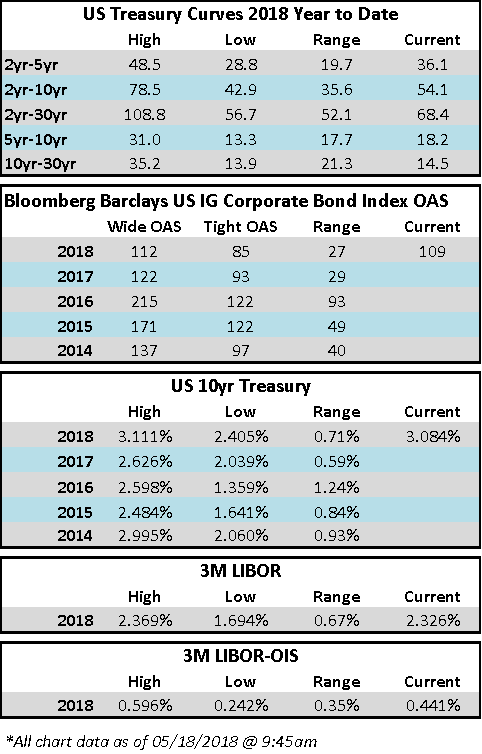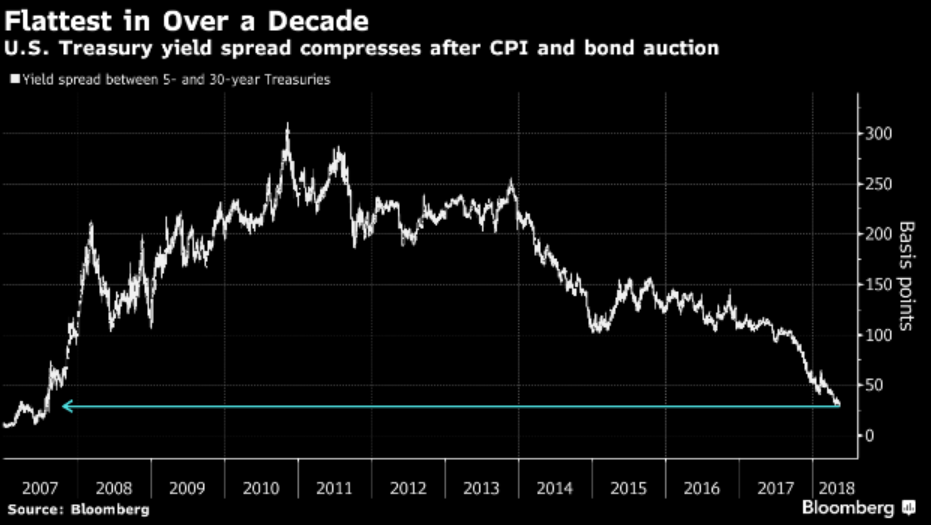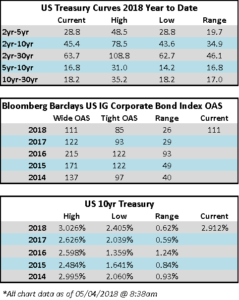Fund Flows & Issuance: According to a Wells Fargo report, flows week to date were $0.3 billion and year to date flows stand at -$26.2 billion. New issuance for the week was $4.2 billion and year to date HY is at $89.1 billion, which is -23% over the same period last year.
(Bloomberg) High Yield Market Highlights
- Supply-starved U.S. junk bond investors feasted on CCC and PIK deals yesterday, despite choppy stocks and softening oil prices. Four new deals for $1.4b priced, led by CCC and PIK credits, and funds saw a modest inflow.
- Junk bond spreads, yields were little changed
- Triple-C credits traded above issue price reflecting the risk-on mood, even as oil prices dropped for a third straight session
- Atotech, a CCC PIK, priced within talk and traded at 99.625, above issue price
- TMXFIN, also CCC, priced at wide end of talk, traded at 101.375 yesterday afternoon, well above issue price
- CCCs beat BBs and single-Bs with YTD return of 2%
- High yield operating in an overall friendly environment with light supply, low defaults, steady domestic growth
(Bloomberg) Goldman Says Riskiest Junk Bonds Are Most `Mispriced’ Since 2007
- The C-C-Craze for some of the riskiest corporate credits has gone too far, according to Goldman Sachs Group Inc.
- While U.S. investment-grade bonds that are most sensitive to moves in borrowing costs have been hit hard this year, investors continue to pile into debt sold by some of the weakest junk-rated companies. Bonds in the CCC category — just two notches above default — have returned a whopping 330 basis points in total this year, according to Bloomberg index data.
- That outperformance has helped push spreads on the Bank of America Merrill Lynch gauge of CCC rated debt to below 700 basis points earlier this week — the smallest premium since July 2014.
- Meanwhile, Goldman’s preferred valuation measure of corporate credit, which subtracts their projected expected-loss rates from current spreads, shows U.S. high-yield obligations are now mispriced for even the most benign scenarios.
- “In a nutshell, the CRP is the expected excess return on a buy-and-hold strategy of diversified credit portfolios over a five-year period,” write Goldman analysts led by Chief Credit Strategist Lotif Karoui in a note. “Put differently, the CRP is the extra premium earned by investors as compensation for future default losses.”
- Goldman estimates the credit-risk premium for CCC obligations has sunk to a negative 53 basis points, “even under a fairly optimistic assumption of no recession for the next five years.”
- That’s the lowest level since before the financial crisis, when the CRP touched negative 420 basis points in June 2007, at the height of the froth in the global debt market. It suggests investors are likely accepting credit risk without adequate compensation.
(CNBC) HCA and KKR team up for Envision bid
- S. hospital operator HCA Healthcare and private-equity firm KKR have joined forces to make an offer for U.S. physician services provider Envision Healthcare
- The move is aimed at giving HCA and KKR an edge over buyout firms that are also pursuing Envision, which has a market capitalization of $5.1 billion and long-term debt of $4.6 billion, the sources said.
- HCA, which has a market capitalization of $36 billion and long-term debt of $31.6 billion, wants to acquire Envision’s AmSurg ambulatory surgery business, with KKR taking the over the remainder, according to the sources.
- Nashville-based Envision has asked potential acquirers to submit final offers later this month, sources said. Other private-equity firms competing for Envision include a consortium of Carlyle Group and TPG Global, sources added.
- Envision announced last year it was reviewing a range of strategic alternatives after reporting disappointing third-quarter earnings, which it attributed partly to the effects of hurricanes Harvey and Irma as well as a slowdown in the growth of patient demand.
- Last year, Envision agreed to sell its ambulance unit, AMR, to Air Medical, a medical helicopter business owned by KKR, for $2.4 billion.
- The year prior, it merged with AmSurg in an all-stock deal that valued the combined companies at the time at around $10 billion. HCA’s and KKR’s bid would reverse that combination.
(Reuters) Cheniere moves ahead with Corpus Christi LNG expansion
- Cheniere Energy Inc said on Tuesday it had approved the construction of a third liquefaction unit, known as a train, at its Corpus Christi export terminal in Texas, the first new liquefied natural gas project to go ahead in the United States since 2015.
- The positive investment decision on the 4.5 million-tonne per annum (Mtpa) LNG train comes as Washington and Beijing have stepped back from the brink of a trade war and agreed to hold further talks to boost U.S. exports to China.
- China, which is turning to natural gas to reduce its dependency on coal for power, overtook South Korea last year to become the world’s No. 2 LNG buyer. Companies with U.S. projects say China could use LNG imports to reduce a trade surplus with the United States.
- For its part, Cheniere signed long-term deals with China National Petroleum Corp (CNPC) in February, earmarking 1.2 Mtpa of the output from Corpus Christi Train 3 for the state-owned oil and gas firm.
- The first two trains at Corpus Christi are expected to enter service next year. There is no timeline for the third train, though the builds generally take about four years each.



